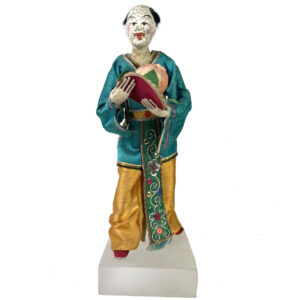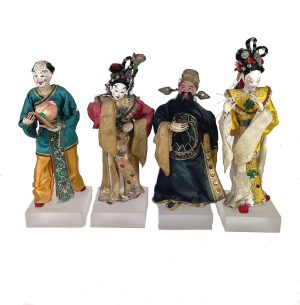Vintage Male Doll Holding a Peach, China (1301A)
Original price was: $195.00.$135.00Current price is: $135.00.H: 9.25″ W: 3.125″ D: 3″ | Free SHipping within continental u.s.
Vivacious attendant doll offering huge peach in vibrant Chinese dance costume in red, yellow, green-blue with sequins, silver and gold thread and plum blossoms as wish for Five Happinesses. On Lucite stand, part of set of 4 .


